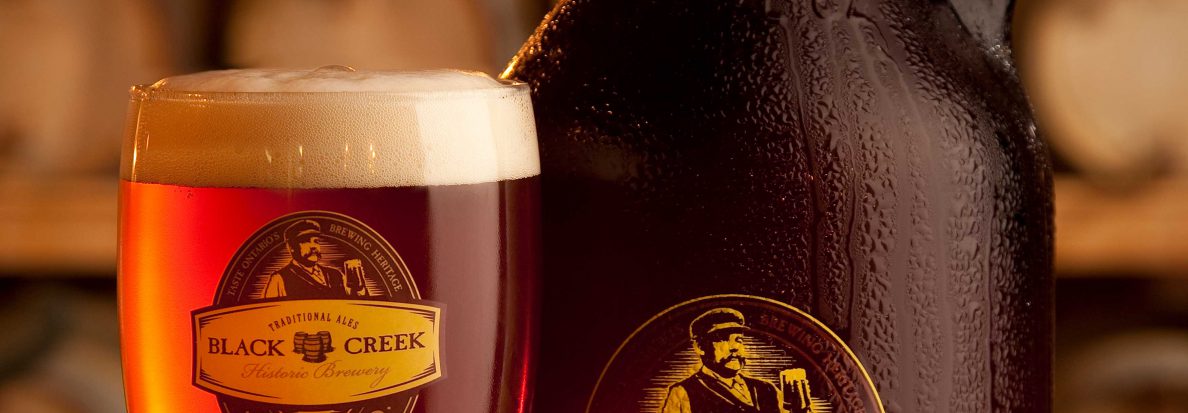On my brewery tour, I like to ask my beer-lovers whether they’ve visited other breweries before. Partly to encourage comparison and contrast between large-and-modern breweries and our very small, historic one—but also, because there are a lot of cool breweries out there, and discussing them tends to unleash that excited gleam in people’s eyes.
I understand. I love brewery tours myself. It’s fun picking up tips from other guides, and I always learn something new. Then I got to thinking—which breweries are on my personal bucket list?
After some research, some reminiscing, and some conversations, I present the following five breweries. My reasons are mostly idiosyncratic—it’s kind of like the way everyone’s palate is different. Different aspects of breweries attract different people.
Without further ado:
Alexander Keith’s: Halifax, Nova Scotia
When I ask if people have visited other breweries, “Alexander Keith’s” is a fairly frequent response. According to my beer-lovers, Keith’s also has guides in 1860s costume—and they sing and dance!

Well, I think we should all be happy that I don’t dance on tour, but I must admit: this notion of interweaving story and song into a brewery tour intrigues me. Plus, visitors get to walk through Keith’s home and brewhouse, play games, and sample ale. Beer and a highly interactive, theatrical tour? Sign me up!
Brouwerij der Sint-Benedictusabdij de Achelse Kluis (Achel Brewery): Achel, Belgium
Of the ten currently approved Trappist breweries, this one is the smallest. The site itself dates back to 1648—originally, it was a Dutch chapel, but became an abbey in 1686. Beer was brewed onsite starting in 1852, and by 1871, it was a Trappist monastery.
So why Achel? Mostly, I’m not as familiar with Trappist beers as I’d like to be, I like monasteries, and Belgium is gorgeous. Over the past year, I’ve been making a concerted effort to expand my palate. Given the importance of the Trappist monasteries in brewing history, it only seems right to include one. Besides, the history geek in me revels at the thoughts of walking through cloisters and partaking in a tradition stretching back to the 1600s.
Plus, the monastery is the beautiful Belgian countryside, close to several biking/walking trails.
Guinness: Dublin, Ireland
The granddaddy of stouts. Okay, so I’ve also been nursing a desire to visit Ireland. Technically, you can no longer visit the brewery itself. Instead, Guinness receives visitors in the Guinness Storehouse, which opened in 2000. Tours start in the world’s largest pint glass and touch on everything from Guinness history to interactive displays on responsible drinking.
Like most of the breweries here, this intrigues several sides of my personality.
- I’m growing very fond of stouts. I want to taste a Guinness actually brewed in Ireland.
- Let’s see how the really big breweries do tours!
- Did I mention it’s in Ireland?
Dogfish Head: Milton, Delaware
A sentimental choice for me. Whilst traipsing around Virginia earlier this year, I became acquainted with Dogfish Head Ale. It’s a delightful—and rapidly growing—American craft brewery and a dear friend’s favourite. Which means I would have a pal for the free tour, which hits the brewhouse, cellars, and bottling line. I’ve heard nothing but positive comments about Dogfish Head’s enthusiasm and passion, and it’s a brewery that will always bring a smile to my face.
Speight’s Brewery: Dunedin, New Zealand
Ah, the pride of the south. Speight’s was founded in 1876 by James Speight, Charles Greenslade, and William Dawson. Besides the original brewery in Dunedin, there is another in Auckland. The Dunedin brewery stands on Rattray Street above a natural spring; the brewery has a free tap where the public can fill their own bottles with spring water. Despite Speight’s branding as a “Gold Medal Ale, thanks to two wins at the 1880 Melbourne Exhibition, Speight’s is in fact a lager.
I have actually visited this brewery before. I include it primarily because I am homesick for New Zealand. And also, I thoroughly enjoyed my time there: with our perky guide, we walked through the history of brewing from Ancient Egypt through to 1800s New Zealand. The brewery is big, and we got to see a significant portion of it. And to cap it all off…
Twenty minutes in the taproom, with free access to the taps.
My one regret about my visit to Speight’s (and the other reason I want to go back), is that I went before I had learned how to really taste beer. To be blunt: I didn’t like beer yet. I just thought it was interesting.
What I’d give for those twenty minutes now…
What is your brewery bucket list? (Besides Black Creek, I mean!)
-Katie










